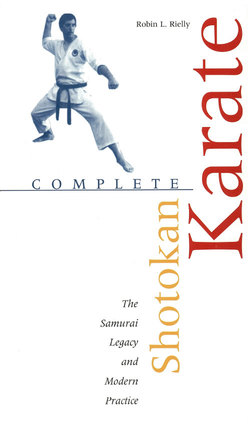Complete Shotokan Karate

Реклама. ООО «ЛитРес», ИНН: 7719571260.
Оглавление
Robin L. Rielly. Complete Shotokan Karate
Отрывок из книги
Complete Shotokan Karate
The Samurai Legacy and Modern Practice
.....
The customs of the boxers were not unlike those of the medieval Japanese fencing schools. The town boxing master taught selected students in private training sessions. Many students, in order to improve their proficiency, toured the country challenging these resident teachers. If the challenger lost, he would likely remain with his new master to study. If he won, the boxing teacher might be chased out of town and lose his school. The rules of combat specified that the challenger could decide whether weapons were to be used and, if so, what they would be. Therefore, a teacher had to be proficient with as many weapons as possible in order to protect his own interests. If the challenger was an unknown, the master might let him fight his senior students. This gave him time to observe the new opponent's technique and plan his strategy. If the students were defeated, the master would have to accept the challenge.
The proliferation of the boxing schools is obvious: there are over forty well-known systems extant in China today.7 In the People's Republic of China, the general classification of martial arts, ch'uan-fa, has been changed to wushu, literally, "military arts." (Incidentally, the term common in the West for these arts, "kung-fu," is from a Cantonese word meaning "to be skillful at something"; it should not be applied to Chinese fighting systems, since its meaning is so general.) National contests are held in China, the arts being as popular as ever, particularly in light of the government's emphasis on physical fitness and the individual soldier. The warming of relations between the United States and China in the 1970s has made it possible for groups of Chinese martial artists to tour the United States and give demonstrations of their art.
.....